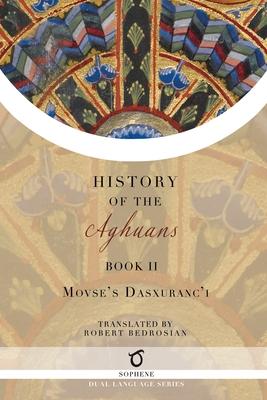The History of the Aghuans by Movses Dasxuranc'i (Kaghankatvatsi) is a major source for the history of the indigenous Aghuan people of Caucasia from the earliest times to about A.D. 988. Aghuania comprised parts of modern Dagestan and Azerbaijan, Armenia's eastern neighbor. Its ancient peoples and their numerous languages were noted occasionally by classical Greek and Latin authors. Like the neighboring Armenians, the Aghuans were part of the Iranian-Zoroastrian culture-world for at least a millennium. Their royalty and nobility had marriage ties with their counterparts in Iran and Armenia. Also, like Armenia, Aghuania was among the countries early visited by the Apostles; and the Aghuan and Armenian churches were frequently united. Book One, in 30 chapters, gives a brief summary of Armenian and Aghuanian history reaching to the end of the 5th century. Book Two, in 52 chapters, describes events from the 5th-7th centuries reaching the year 683.
This History of the Aghuans is the sole-surviving written account of a culture now extinct. It is the only literary artifact which describes events of note from the socio-economic, ecclesiastical, political, and military history of the Aghuan people. The History of the Aghuans contains a wide range of invaluable and unique historical and ethnographical information, from an astounding description of a pagan cult's ritual, to the Christian cult of relics, from the Aghuan king at table, to a description of the royal court on the move, from descriptions of Sasanian history (including presents, dress, and court protocols) to a priceless interview with a Khazar Qaqan. Indeed, the History is a primary, but under-utilized, source for the history of the Turkic Khazar kingdom (7-10th centuries). Additionally, it provides otherwise unknown information on Caucasian tribes and peoples, resident and nomadic, and supplements and enhances our information on Aghuania's neighbors.
The Sophene Dual Language series places the original Armenian text side-by-side with its English translation, making for the most accessible editions of the finest works of Armenian literature.
Translated into English by Robert Bedrosian.
